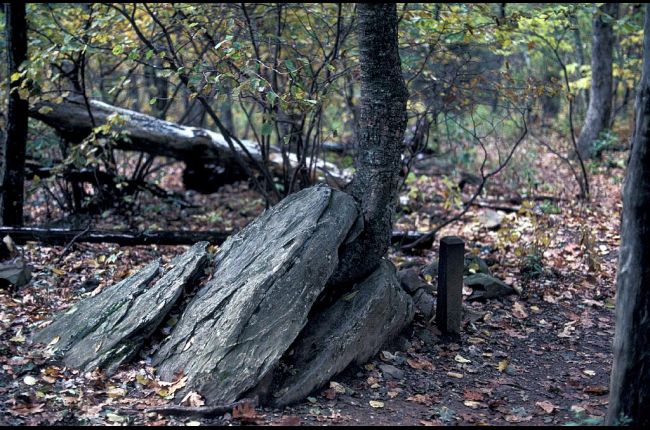What is physical weathering?

Sometimes called mechanical weathering, physical weathering is the process that breaks rocks apart without changing their chemical composition. These examples illustrate physical weathering:
Swiftly moving water
Rapidly moving water can lift, for short periods of time, rocks from the stream bottom. When these rocks drop, they collide with other rocks, breaking tiny pieces off.
Ice wedging
Ice wedging causes many rocks to break. This refers to the repeated freezing and melting of water within small crevices on the rock surface. This expansion and contraction is also a major cause of potholes in streets. Water seeps into cracks in the rocks, and, as the temperature drops below freezing, the water expands as ice in the cracks. The expansion exerts tremendous pressure on the surrounding rock and acts as a wedge, making cracks wider. After repeated freezing and thawing of water, the rock breaks apart.
Plant roots
Plant roots can grow in cracks. The pressure of a confined growing root can be substantial. These pressures make cracks in the rocks larger, and, as roots grow, they can break rocks apart.
When you pick up a rock out of a creek or stream, you see an example of physical weathering, which is also referred to as mechanical weathering. Rocks often experience physical weathering as a result of exposure to swiftly moving water.
- Water flowing in a stream into a rock can eventually create a hole in the rock.
- When the water in a river or stream moves quickly, it can lift up rocks from the bottom of that body of water. When the rocks drop back down they bump into other rocks, and tiny pieces of the rocks can break apart.
- Many rock surfaces have small crevices on them. Water can freeze in these crevices when it is cold, and then melt when the weather is warmer. This repeated freezing and thawing creates ice wedges, which can cause rocks to break.
- The rushing of powerful waves towards cracks found within rocks can trap a layer of air at the bottom of the cracks. When a wave retreats, the air that was trapped can be released with a powerful force, thus weakening the rock.
Physical Weathering Due to Pressure
If you have ever seen a tree growing out of a rock, you have witnessed physical weathering taking place. Being subject to environmental pressure can cause rocks to undergo physical weathering.
- Roots of trees or other plants growing into cracks in rocks may put pressure on the surrounding rock, eventually breaking rocks apart as the roots grow.
- Pressure release occurs when materials on the surface are removed from erosion or another process, and the rock underneath expands and fractures.
- Glacier movement can cause pressure release as it moves away from the surface of a rock.
- Ice wedges are a big cause of potholes in roads and streets. As ice forms in the cracks of a street, the water expands and pushes against the surrounding rock, making the cracks wider, and eventually breaking apart the rock.
The article was originally published here.


Comments are closed.